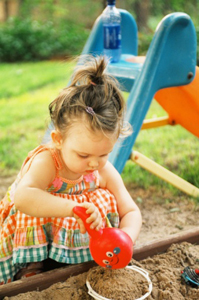Raccoons Carry Deadly Parasite
Raccoons may be infected with Baylisascaris procyonis, a roundworm that is dangerous to people. Reported cases of Baylisascaris infection in people are rare, but can be severe or life-threatening. People become infected when they accidentally ingest soil, water, or objects that have been contaminated with raccoon feces. Most infections are in children and others who are more likely to put dirt or animal waste in their mouth by mistake.
Baylisascaris infection: Raccoons more active in spring…
Raccoons emerge from their winter dormancy (sleep) and become more active in the spring. They begin scavenging for food and searching for a mate. This means raccoons may be around your home more often in the spring.
A parasite common to raccoons killed two Minnesota children within the past five years and poses a threat to others who play where raccoons feed and defecate, warns a Twin Cities medical researcher who played a key role in ascertaining the cause of death of the two children.
“It seems to be toddlers that are at greatest risk,” says Christopher Moertel, medical director of hematology and oncology at Children’s Hospitals and Clinics in St. Paul and a clinical associate professor at the University of Minnesota.
The parasitic nematode lives harmlessly in the brains of about 50 percent of the raccoons in Minnesota and perhaps as many as 75 percent in some other parts of the country, says Moertel. The worm can pass into people who touch raccoon feces and then touch their mouth or food. The nematode “has to be introduced into the intestinal tract so it can hatch,” Moertel said. Children are susceptible because they play on the ground and often put their hands in their mouth.
Inside the body, the parasite migrates to the brain, inciting an immune response. The neurotoxin the human body produces to kill the worm also destroys the white matter of the brain. “Certainly when they travel to the brain, that’s when devastation and death occur,” Moertel says. Nationwide, the nematode has killed or seriously injured children in about 20 documented cases, he says.
The first known Minnesota victim was an Onamia boy whose family kept a pet raccoon. He contracted the disease about five years ago and died about two years ago when he was 5. The second state victim may have become infected from playing in the back yard or in a nearby park when the family lived in Richfield, a Minneapolis suburb. He contracted the disease when about 18 months old and died three years ago when he was 3. In both cases, over a period of months, the victim began to stumble and fall and eventually slipped into a coma before dying, says Moertel.
Both cases initially stumped doctors. Doctors treating the Onamia boy contacted Moertel because the victim was believed to have a rare blood disorder. Reviewing medical literature, Moertel discovered a disease with similar symptoms, described by Joseph Butterfield at Mayo Clinic. Testing the boy’s cerebrospinal fluid, Butterfield was able to measure the concentration of neurotoxin. As the concentration increased, the boy’s condition worsened. Doctors treated him with steroids and chemotherapy, but the boy’s brain had already been destroyed.
At this point, Moertel and Butterfield still did not understand the origin of the disease. Several months later, the second case was reported. Again perusing the literature, Moertel discovered an article by Purdue University parasitologist Kevin Kazacos about the effects of raccoon roundworms on humans. Moertel sent samples of blood serum and CSF from the second victim to Kazacos. Kazacos tested the serum and fluid for antibodies to the raccoon nematode and both samples tested positive for large amounts.
The effects on the Minnesota boys “were among the most intense responses to the worms he had ever seen,” Moertel says. Autopsies were never performed on the boys, but Kazacos’ work left little doubt that the raccoon-borne nematodes were responsible, he says.
To protect youngsters from the disease, Moertel and Kazacos recommend the following:
- Avoid attracting raccoons. Make sure bird feeders are raccoon-proof, and store feed where raccoons can’t get into it.
- Avoid domesticated raccoons.
- Keep youngsters away from areas with signs of raccoons, such as feces or tracks.
- Don’t let children put soil or objects from the ground into their mouth.
- Wash toddlers’ hands.
If a child does ingest raccoon feces, bring the child and any remaining feces to a doctor right away. The disease can be prevented if treatment is begun in one to three days.
Raccoon removal and control is a job for a professional. Also because the feces may carry these parasites that can be transferred to humans and pets, sanitation is a must!
The best prevention advice is to stay away from wild animals, live or dead, and call a Wild Animal Control Expert immediately. Also, if your pet is acting ill or strange, contact your veterinarian immediately.
Source: //www.dnr.state.mn.us
More on: Discouraging Raccoons From Living in and Around Your Home or Parks
More on: If You Find A Raccoon Latrine Near Your Home ![]() [PDF, 111 KB, 1 page]
[PDF, 111 KB, 1 page]
More on: Raccoon Latrine Clean-up [PDF, 111 KB, 1 page]
More on: Baylisascaris




